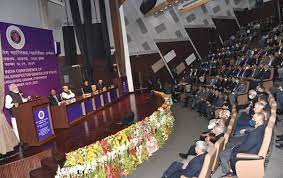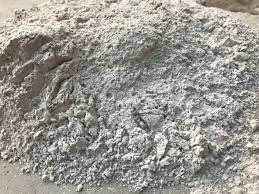Today Current Affairs: 23rd November 2021 for UPSC IAS exams, State PSC exams, SSC CGL, State SSC, RRB, Railways, Banking Exam & IBPS, etc
Table of Contents
56th DGsP/IGsP Conference:

Prime Minister Modi attended the 56th DGsP/IGsP Conference at Lucknow on November 20-21, 2021. The Conference was attended by 62 DGsP/IGsP of States/UTs and DGs of CAPFs/CPOs in Lucknow.
- He stressed on review of SMART Policing concept introduced in 2014 and suggested development of a roadmap for its continuous transformation and institutionalisation of the same in Police forces.
- The Prime Minister also awarded the President’s Police Medal for Distinguished Service to IB personnel. For the first time, as per the directives of the Prime Minister, IPS officers from various States had submitted articles on contemporary security issues, which added more value to the conference.
- Earlier, the Conference was inaugurated by the Union Home Minister on November 19, 2021, wherein he had awarded trophies to the three-best Police Stations of the country.
INS Visakhapatnam:

INS Visakhapatnam, a P15B stealth guided missile destroyer, was commissioned into the Indian Navy in the presence of Raksha Mantri Shri Rajnath Singh at the Naval Dockyard, Mumbai on November 21, 2021.
- The event marks the formal induction of the first of the four ‘Visakhapatnam’ class destroyers, indigenously designed by the Indian Navy’s in-house organisation Directorate of Naval Design and constructed by Mazagon Dock Shipbuilders Limited, Mumbai.
- INS Visakhapatnam measures 163m in length, 17m in breadth with a displacement of 7,400 tonnes and can rightfully be regarded as one of the most potent warships to have been constructed in India.
- The ship is propelled by four powerful Gas Turbines, in a Combined Gas and Gas (COGAG) configuration, capable of achieving speeds in excess of 30 knots.
- The ship has enhanced stealth features resulting in a reduced Radar Cross Section (RCS) achieved through efficient shaping of hull, full beam superstructure design, plated masts and use of radar transparent materials on exposed decks.
- The ship is equipped to fight under Nuclear, Biological and Chemical (NBC) warfare conditions.
- Named after the historic city of Andhra Pradesh on the east coast, Visakhapatnam, the ‘City of Destiny’, the ship has a total complement of about 315 personnel.
IRNSS-NaVIC: ISRO

The Vice President has suggested ISRO (Indian Space Research Organization) make Indian regional navigation satellite system-Navigation in Indian Constellation (NaVIC) for global use.
- In 2006, the project was approved by the Government of India and was expected to be completed and implemented by 2015-16.
- The constellations’ first satellite (IRNSS-1A) was launched on 1st July 2013 and the seventh and final satellite (IRNSS-1G) was launched on 28th April 2016.
- With the last launch of the constellation’s satellite (IRNSS-1G), IRNSS was renamed Navigation Indian Constellation (NaVIC) by India’s Prime Minister.
- Presently, IRNSS consists of eight satellites, three satellites in geostationary orbit and five satellites in geosynchronous orbit.
- IRNSS-1I is expected to replace IRNSS-1A, which was rendered ineffective after its three rubidium atomic clocks failed.
- The main objective is to provide reliable position, navigation and timing services over India and its neighbourhood.
- It works just like the established and popular US Global Positioning System (GPS) but within a 1,500-km radius over the sub-continent.
- Technically satellite systems with more satellites provide more accurate positioning information.
- However, compared to GPS (24 satellites) which has a position accuracy of 20-30 metres, the NavIC is able to pinpoint location to an estimated accuracy of under 20 metres.
- It has been certified by the 3rd Generation Partnership Project (3GPP), a global body for coordinating mobile telephony standards.
- It was recognised by the International Maritime Organization (IMO) as a part of the World Wide Radio Navigation System (WWRNS) for operation in the Indian Ocean Region in 2020.
- ISRO is working to build the next generation of IRNSS satellites with indigenous atomic clocks and enhancements to navigation services.
World Fisheries Day: 21st November

World Fisheries Day (WFD) is observed on the 21st November every year.
- The award ceremony was organised by the ministry of fisheries, animal husbandry and dairying, in Bhubaneswar on the occasion of WFD.
- Balasore district (Odisha) has been awarded India’s “Best Marine District”.
- WFD is celebrated to demonstrate solidarity with all fisherfolk, fish farmers and concerned stakeholders throughout the world.
- It was started in the year 1997 when “World Forum of Fish Harvesters & Fish Workers” met at New Delhi leading to formation of “World Fisheries Forum” with representatives from 18 countries and signed a declaration advocating for a global mandate of sustainable fishing practices and policies.
- It is aimed at drawing attention to overfishing, habitat destruction and other serious threats to the sustainability of marine and inland resources.
- In 2019-20, with an overall production of 142 lakh tons, India produced 8% of the global share.
- During the same time period, India’s fisheries exports stood at Rs 46,662 crore, constituting about 18% of India’s agricultural exports.
- India aims to achieve a target of producing 22 million metric tonnes of fish by 2024-25.
- The fisheries sector has witnessed three major transformations in the last few years:
- The growth of inland aquaculture, specifically freshwater aquaculture.
- The mechanization of capture fisheries.
- The successful commencement of brackish water shrimp aquaculture.
- As compared to last year there has been a 34% increase in the budget for the fisheries sector in 2021-22.
USOF Scheme For Aspirational Districts In 5 states:

The Union Cabinet has approved the Universal Service Obligation Fund (USOF) scheme for provisioning of 4G-based mobile services in uncovered villages of aspirational districts across five states — Andhra Pradesh, Chhattisgarh, Jharkhand, Maharashtra, and Odisha.
- NITI Aayog’s Aspirational Districts programme aims to quickly and effectively transform 112 most under-developed districts across the country.
- It envisages to provide 4G based mobile services in the 7,287 uncovered villages of 44 Aspirational Districts across five States.
- It would be funded by the Universal Service Obligation Fund (USOF).
- It will enhance digital connectivity useful for self-reliance, facilitate learning, dissemination of information and knowledge, skill upgradation and development, disaster management, e-Governance initiatives, establishment of enterprises & e-commerce facilities, etc.
- It seeks to fulfill the vision of Digital India promoting domestic manufacturing and fulfilling the objectives of Atmanirbhar Bharat etc.
Universal Service Obligation Fund (USOF):
- USOF ensures that there is universal non-discriminatory access to quality ICT (Information and Communications Technology) services at economically efficient prices to people in rural and remote areas.
- It was created under the Ministry of Communications in 2002.
- It is a non-lapsable fund, i.e., the unspent amount under a targeted financial year does not lapse and is accrued for next years’ spending.
- All credits to this fund require parliamentary approval and it has statutory support under Indian Telegraph (Amendment) Act, 2003.
Objectives:
- Economic: Network extension & stimulate uptake of the ICT services
- Social: Mainstreaming the underserved & un-served areas/groups by bridging the Access Gap.
- Political: to enable citizens exercise their political rights in an informed way and
- Constitutional: Equitable distribution of the fruits of the telecom/digital revolution and fair allocation of national resources (pooled USO levy) via targeted subsidies.
Green Hydrogen:

The Narendra Modi government’s National Hydrogen Mission is kick-starting with the Indian Oil Corporation (IOCL) floating a global tender to set up green hydrogen generation units at two of its big refineries in North India.
- IOCL is India’s largest commercial undertaking, operating the largest number of refineries in the country.
Green hydrogen:
- Hydrogen when produced by electrolysis using renewable energy is known as Green Hydrogen which has no carbon footprint.
- The hydrogen that is in use today is produced using fossil fuels, which is the primary source.
- Organic materials such as fossil fuels and biomass are used for releasing hydrogen through chemical processes.
Significance of Green Hydrogen:
- Green hydrogen energy is vital for India to meet its Nationally Determined Contribution (INDC) Targets and ensure regional and national energy security, access and availability.
- Green Hydrogen can act as an energy storage option, which would be essential to meet intermittencies (of renewable energy) in the future.
- In terms of mobility, for long distance mobilisations for either urban freight movement within cities and states or for passengers, Green Hydrogen can be used in railways, large ships, buses or trucks, etc.
- Green Chemicals like ammonia and methanol can directly be utilized in existing applications like fertilizers, mobility, power, chemicals, shipping etc.
- Green Hydrogen blending up to 10% may be adopted in CGD networks to gain widespread acceptance.
- It is a clean-burning molecule, which can decarbonize a range of sectors including iron and steel, chemicals, and transportation.
- Renewable energy that cannot be stored or used by the grid can be channelled to produce hydrogen.
Rani Gaidinliu Tribal Freedom Fighters Museum:

Union Home Minister Amit Shah will lay the Foundation Stone for setting up the Rani Gaidinliu Tribal Freedom Fighters Museum at Luangkao village in Manipur’s Tamenglong district on November 22, 2021
- The project has been sanctioned by the Union Ministry of Tribal Affairs at an estimated cost of 15 crore rupees.
- The State Cabinet had decided to set up the Museum at Luangkao Village in Tamenglong District which is the birthplace of renowned freedom fighter Rani Gaidinliu and decided to name the Museum as Rani Gaidinliu Tribal Freedom Fighters Museum.
- The Ministry of Tribal Affairs is celebrating its Azadi Ka Amrit Mahotsav week beginning on 15th November which was launched by Prime Minister Narendra Modi as Janjatiya Gaurav Divas.
Swachh Survekshan Awards, 2021:

Indore was ranked the cleanest city for the fifth consecutive year by the Union Ministry of Housing and Urban Affairs in its annual cleanliness ranking.
- The Swachh Survekshan Awards, 2021 handed out by President Ram Nath Kovind included the cleanest State honour for Chhattisgarh for the third time, in the category of States with more than 100 urban local bodies.
- Prime Minister Narendra Modi’s constituency, Varanasi, won the award for the cleanest “Ganga city”.
- Among cities, Surat and Vijayawada secured the second and third place, respectively.
- The Ministry said the survey was carried out in 4,320 cities over 28 days, where feedback from 4.2 crore persons was recorded.
- Of States with over 100 urban local bodies (ULBs), Maharashtra and Madhya Pradesh were ranked second and third respectively.
- Jharkhand was judged the cleanest State with less than 100 ULBs, followed by Haryana and Goa.
- Among cities with population over 1 lakh, Indore, Surat, Vijayawada, Navi Mumbai, New Delhi, Ambikapur, Tirupati, Pune, Noida and Ujjain were the top 10, in that order.
- Of cities with population less than 1 lakh, Maharashtra’s Vita was the cleanest, followed by Lonavala and Sasvad.
- The New Delhi Municipal Council’s area was ranked the cleanest in the category of cities with 1-3 lakh population.
- Noida was named the cleanest among medium-sized cities, that is with 3 lakh to 10 lakh population. Among the big cities with population of 10 lakh to 40 lakh, Navi Mumbai was ranked the cleanest.
Lateral Entry:

The recent recommendation of 31 candidates by the Union Public Service Commission (UPSC) to be inducted into senior and mid-level positions in various union ministries is the second such attempt towards bringing specialists from private sector in the senior and middle level of bureaucracy.
- Earlier too, nine lateral entrants from private sector were inducted in 2019.
- Experts have warned about the procedure of recruitment.
- They say, meritocracy demands that the recruitment procedure of selecting professionals should stand the test of merit through a fair and transparent procedure.
- The fair selection and appointment of civil servants is the foundation of modern merit-based bureaucracy.
- Therefore, any deviation from the established procedure must also fulfil the conditions of fair procedure of recruitment.
- To be constitutionally correct and to increase the legitimacy of the move, the recruitment procedure of induction of lateral candidates should be initiated in the parliament.
- A comprehensive legislative process will not only help usher in clarity over various aspects of lateral entry recruitment but also legitimise the process and provide it with the endorsement of wider political forces.
What Is Fly Ash?

Activists and fishermen have complained about fly ash making its way into the Kosasthalaiyar from the North Chennai Thermal Power Station (NCTPS). This was due to a leak in the pipeline carrying ash to the ash pond.
- Fly Ash Popularly known as Flue ash or pulverised fuel ash, it is a coal combustion product.
- Composed of the particulates that are driven out of coal-fired boilers together with the flue gases.
- Depending upon the source and composition of the coal being burned, the components of fly ash vary considerably, but all fly ash includes substantial amounts of silicon dioxide (SiO2), aluminium oxide (Al2O3) and calcium oxide (CaO), the main mineral compounds in coal-bearing rock strata.
- Minor constituents include: arsenic, beryllium, boron, cadmium, chromium, hexavalent chromium, cobalt, lead, manganese, mercury, molybdenum, selenium, strontium, thallium, and vanadium, along with very small concentrations of dioxins and PAH compounds.
- It also has unburnt carbon.
Health and environmental hazards:
- Toxic heavy metals present: All the heavy metals found in fly ash nickel, cadmium, arsenic, chromium, lead, etc—are toxic in nature. They are minute, poisonous particles accumulate in the respiratory tract, and cause gradual poisoning.
- Radiation: For an equal amount of electricity generated, fly ash contains a hundred times more radiation than nuclear waste secured via dry cask or water storage.
- Water pollution: The breaching of ash dykes and consequent ash spills occur frequently in India, polluting a large number of water bodies.
- Effects on environment: The destruction of mangroves, drastic reduction in crop yields, and the pollution of groundwater in the Rann of Kutch from the ash sludge of adjoining Coal power plants has been well documented.




